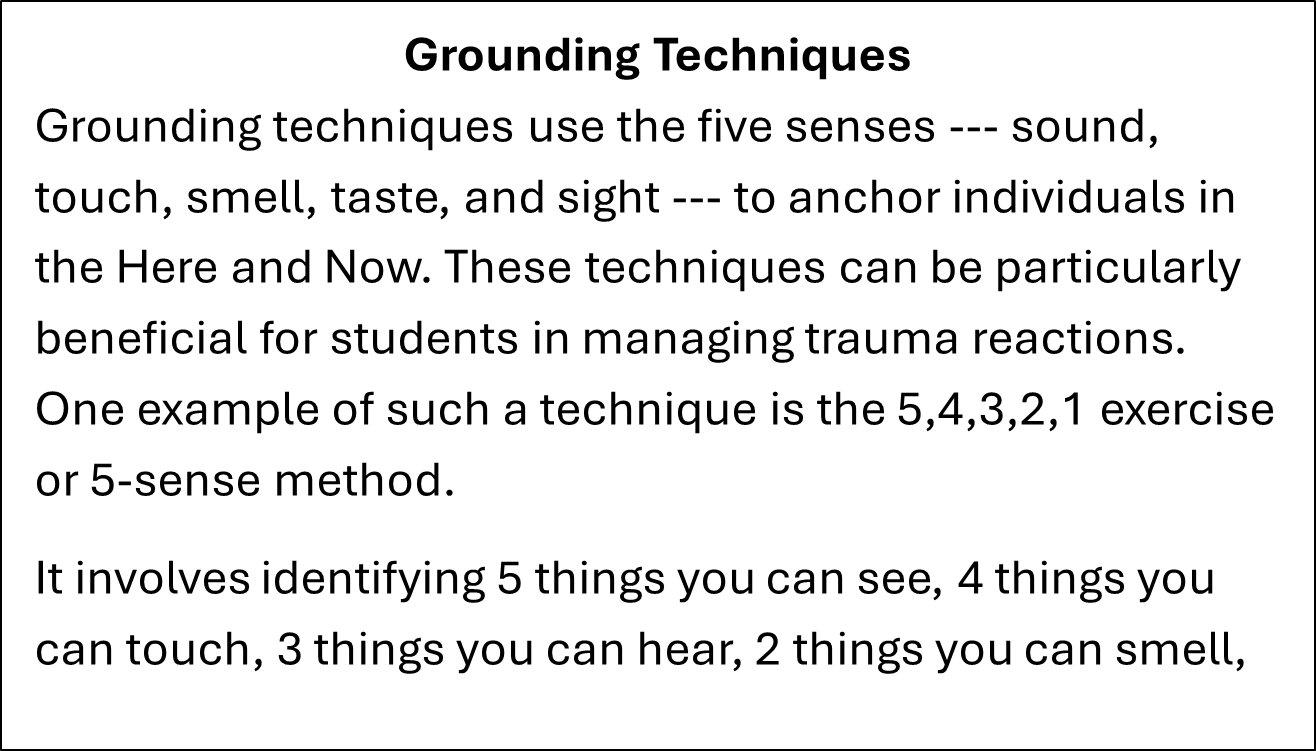Trauma stands as a profound public health concern, underscored by the distressing reality that up to two-thirds of U.S. children have encountered at least one type of serious childhood trauma — ranging from abuse and neglect to natural disasters and violence — and that 70% of U.S. adults have faced traumatic events at least once in their life (CDC, 2022). Within the higher education landscape, this statistic suggests that instructors are very likely to engage with students carrying a history of trauma. Understanding trauma's effects and adopting effective teaching strategies for students affected by trauma is therefore essential.
Misinterpretation of Trauma Manifestations
Trauma manifests in diverse emotional, behavioral, social, and academic challenges, which, while often visible, may be easily misunderstood in educational settings. Instructors might find themselves puzzled or frustrated by behaviors like lack of attention, sudden aggression, zoning out, falling asleep, or unexpected resistance to feedback, potentially mistaking these responses as motivational issues or personal shortcomings. While it is not always the case, many times these could be trauma reactions. Without recognizing it, it’s easy to mislabel students as “unmotivated”, “lazy”, “careless”, “manipulative”, “aggressive”, or even “crazy,” which only serves to exacerbate the situation, diminishing the potential for a compassionate and effective educational engagement.
Trauma Reactions among Students
Trauma profoundly impacts students, fundamentally disrupting a student’s psychological
needs: safety, control, connection, belonging, and autonomy. When triggered, students
may experience a past trauma as if it is happening in the present moment. Believing
they are facing imminent danger, the "emotional brain"—the amygdala—takes over, while
the "thinking brain"—executive functions—goes offline, a process known as "flipping
the lid." This leads to a resurgence of overwhelming emotions such as terror, anxiety,
or outrage, experienced during the past trauma event, returning with their original
intensity with compromised ability to self-regulate. It is as though the student's
mental reality is suddenly transported into the past trauma, relegating the present
circumstance to the background. Consequently, the instructor will likely observe a
range of survival behaviors associated with the Fight, Flight, and Freeze responses,
including:
• Difficulty processing instructions
• Decreased attention, memory, and focus
• Difficulty understanding the consequences of actions
• Heightened vigilance; inaccurate perception of danger (e.g., constructive feedback
perceived as personal attacks)
• Self-protective behaviors such as aggression or withdrawal
• Refusal to follow classroom rules and/or instructions
• Being easily frustrated, quick to give up, unwilling to try new things
• Rapid mood changes, being easily overwhelmed, upset, feelings of hopelessness, confusion,
fear, and/or anxiety
The Complexity of Trauma Triggers
The unpredictability of trauma triggers adds another layer of complexity. Triggers can be both obvious and obscure, making some reactions seem perplexing without the context of the individual’s experiences. For example, it is clear that a student who recently experienced a car accident can be triggered by seeing the image of a similar car. However, the same student might also be triggered seeing a green couch if the car that hit them was the same color. In the latter case, the student’s reaction to a green couch can be confusing and easily misunderstood. Therefore, it is important for the instructor to understand that students’ reactions may not be intentional or manipulative when triggers are not straightforward.
Suggestions for Trauma-informed Teaching
The point is: students can't learn if they don't feel safe. When instructors are sensitive to trauma reactions, responsive to the needs of students with trauma history, and make changes to foster a safe environment, it makes a huge difference in students’ ability to learn. Hence, here are some suggestions:
- Opening Acknowledgement: Begin each course by recognizing the possibility of trauma histories among students; Emphasize the importance of a supportive classroom environment by offering accommodations for students to manage trauma reactions, such as stepping out of class temporarily if needed.
- Creating a Safe Space: Establish a safe and supportive environment through clear communication of expectations, consistency, and predictability within the classroom.
- Encouraging Disclosure: Invite students to share their trauma histories as they are comfortable, emphasizing on no needs to divulge specifics and stressing the disclosure will allow you to provide the needed helps to students.
- Compassionate Inquiry and Collaborative Problem-Solving: Demonstrate self-regulation and approach trauma reactions with empathy and understanding; collaborate with students to identify self-rescue/self-care strategies that support their learning.
- Referral to Support Services: Provide information on counseling and support resources available to encourage professional
help-seeking.
By integrating these recommendations, educators can significantly enhance the learning environment for students with trauma histories, fostering not just academic success but also contributing to healing and resilience.
Want to learn more? Here are some additional resources:
Trauma-informed Teaching Resources
Trauma Informed Teaching – Research and Resources


